The Lemkos and Their Fate
The Lemkos are an ethnic group who historically inhabited the mountain valleys and foothills of the Carpathians in a region (called Lemkovyna or Lemkivshchyna) that today stretches along the border between Poland and Slovakia covering some western territories in Ukraine. The area that today belongs to Poland was a part of Galicia until WWI, before falling to Poland in the interwar period.
While the Lemkos are a distinct ethnic group, many consider themselves to be part of the broader Rusyn and/or Ukrainian communities. The Lemko dialect is considered by most linguists to be most closely related to Ukrainian. Lemkos are primarily of Greek Catholic or Orthodox Christian religious background.
An estimated 130,000 to 140,000 Lemkos were living in the Polish part of Lemkivshchyna in 1939. After WWII, as a result of Polish-Soviet population exchanges and the 1947 Operation Vistula campaign, these Lemkos were forcibly resettled to the Soviet Union (about 90,000 people) and to Poland’s newly acquired western lands (about 35,000 people).
Although a small number of Lemkos returned to their ancestral homeland in the late 1950s (some 5,000 families), the Lemko population in the Polish part of Lemkivschyna today numbers only around 10,000–15,000.
The Lemkos and Their Faith
The Galician Lemko region belonged to the Greek Catholic Eparchy of Przemyśl (Peremyshl), and most of its population was Greek Catholic (also known as Byzantine Catholic, Ukrainian Catholic, or Eastern-rite Catholic). The Eparchy of Przemyśl effectively ceased to exist after the last of the faithful were deported after the war. The Polish government disbanded the church in 1947, its church property and buildings either given to the Roman Catholic Church or left abandoned (that is of what had not been destroyed during the war and Operation Vistula).
The Greek Catholic Church began to revive itself in 1957 after Ukrainians and Lemkos began to return to their ancestral homeland. However, the government made it very difficult for the church to operate, and any activity was permitted only under the auspices of the Roman Catholic hierarchy.
Today, Greek Catholic Lemkos in Poland belong to the Ukrainian Greek Catholic Church.
The Lemkos and Their Churches
The Distinctive Architecture of Lemko Churches
While sharing the principal characteristic features of church architecture across the Carpathians, Lemko churches have many distinctive features, most notably their three-chamber plan above which rise three towers: the tallest, western-facing one at the front of the church, often also housing the belfy; a broader, shorter one over the nave; and the smallest one over the sanctuary. Typically, each tower was topped with a Gothic-influenced spire. Less often, Lemko churches had only one tower at the front with a high gable roof covering the nave and sanctuary.
Lemko churches also featured an external covered gallery (opasannia), a roofing technique that was used in wooden architecture across the Carpathians. Usually surrounding the entire structure, these galleries protected both the external walls and any parishioners who might be there from the weather.
The Fate of Lemko Churches in Poland
On the eve of WWII, 540,000 Greek Catholic Ukrainians, including Lemkos, lived on the territory of the Eparchy of Przemyśl within the boundaries of today’s Poland. The faithful worshiped in 689 Greek Catholic churches (tserkvy) and were organized into 363 parishes.
By the late 1980s, 50% of these churches either no longer existed or were in irreparable condition; 35% had been acquired by the Polish Roman Catholic Church and converted into Roman Catholic churches (kościoły); 9% had stayed in reasonably good condition, but were closed or used for non-sacral needs; 4% had been acquired and used by the Orthodox Church; and 1% were being used as museums – some remaining in their original locations while others had been moved onto museum property (Iwanusiw, Church in Ruins). Although these statistics include churches outside the Lemko region, the overall trend would have been similar if applied to just the Lemko churches.
In recent decades more Lemko churches have been renovated and re-transformed into Greek Catholic churches; nonetheless, today many remain Roman Catholic or hold both Roman and Greek Catholic services. A small number function as Orthodox churches or museums.
In 2013, several Lemko churches were inscribed on the UNESCO World Heritage List as part of the UNESCO Wooden tserkvas of the Carpathian region in Poland and Ukraine, securing the preservation of these unique monuments of wooden architecture.
***
Gathered below are examples of existing Lemko churches in the former Galician Lemko region, today found in Poland.
While all of these churches at one time belonged to the Greek Catholic Eparchy of Przemyśl, it is worth noting that the Lemko region was part of the Orthodox Eparchy of Przemyśl until 1691, which is when the Orthodox Lemkos accepted Uniatism. Thus the churches built before then were originally Orthodox.
Village of Powroznik (Povoroznyk)
Church of St. James | 1604
This church has existed since around 1600, but only a part of the former structure remains, arranged into the sacristy of the present structure. The architecture of the present church was constructed between the 17th and 18th-centuries, with a major reconstruction in 1813. The church was moved from its former location due to the danger posed by flooding, after which it was expanded. After Operation Vistula the church was transformed into a Roman Catholic church. Inscribed in 2013 on the UNESCO World Heritage List.
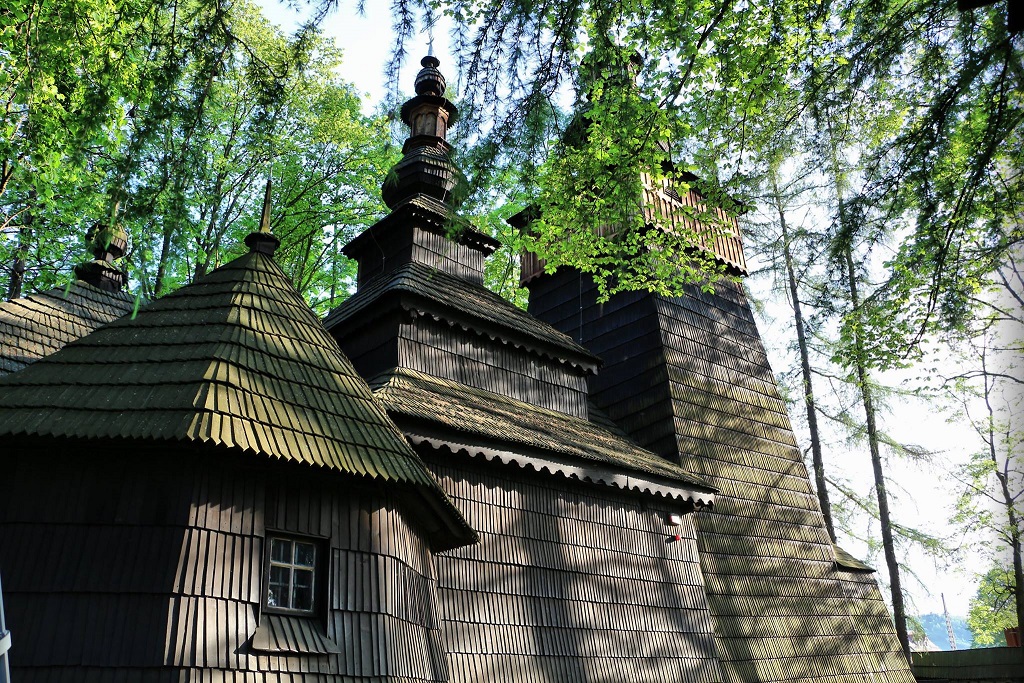
Village of Owczary (Ovchary)
Church of the Protection of Our Most Holy Lady | 1653
After Operation Vistula, the church was transferred to the Roman Catholic parish. After some of the displaced villagers came back to the village in 1956, the church had also restarted Ukrainian Greek Catholic Church services. Since 1998, the church has functioned as a Roman Catholic – Ukrainian Greek Catholic Church. Inscribed in 2013 on the UNESCO World Heritage List.
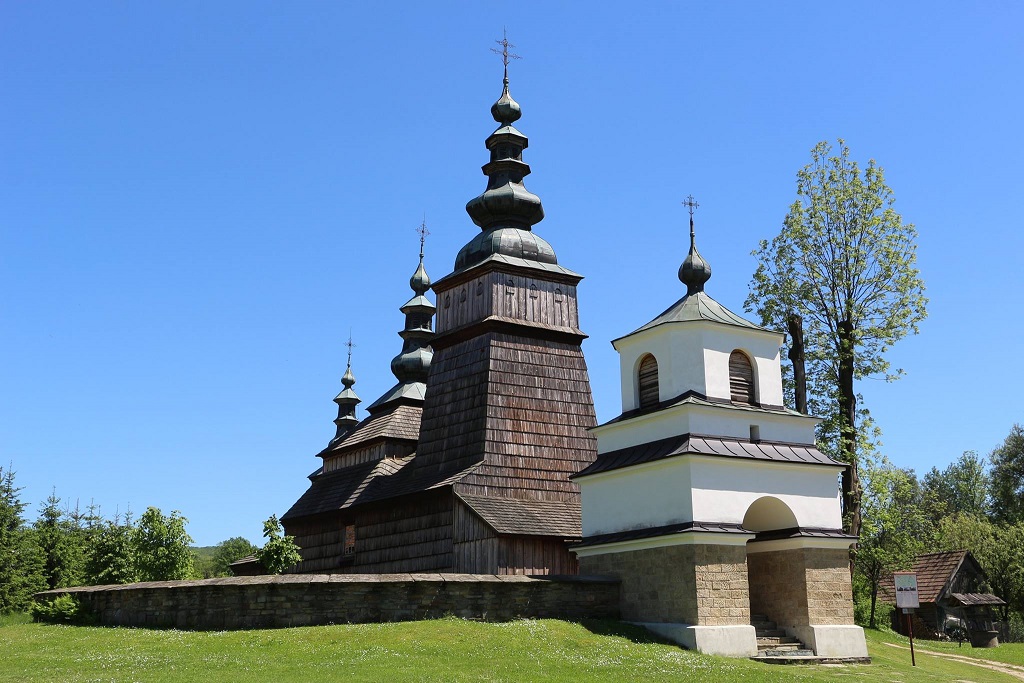
Village of Ulucz (Uliuch)
Church of the Ascension | 1658
The area was inhabited by both Boykos and Lemkos, who were deported in 1947. The church is the third oldest Byzantine rite-style church in Poland. Today it is a museum.
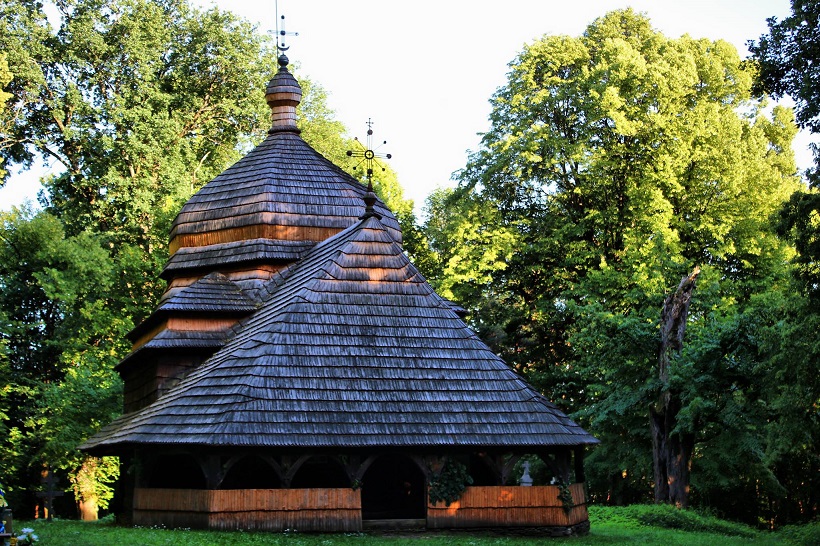
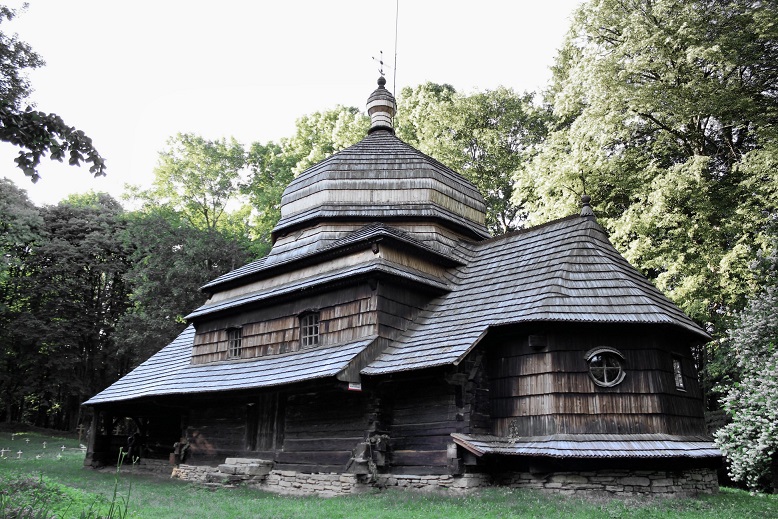
Village of Kwiatoń (Kviaton)
Church of St. Paraskeva | 1700
The church’s tower is considered to be the oldest tower built in the Lemko church architectural style. After Operation Vistula, the church was transformed into a Roman Catholic church. Today, it is sometimes used by Greek Catholics. An excellent example of of Lemko sacred architecture, the church was inscribed in 2013 on the UNESCO World Heritage List.
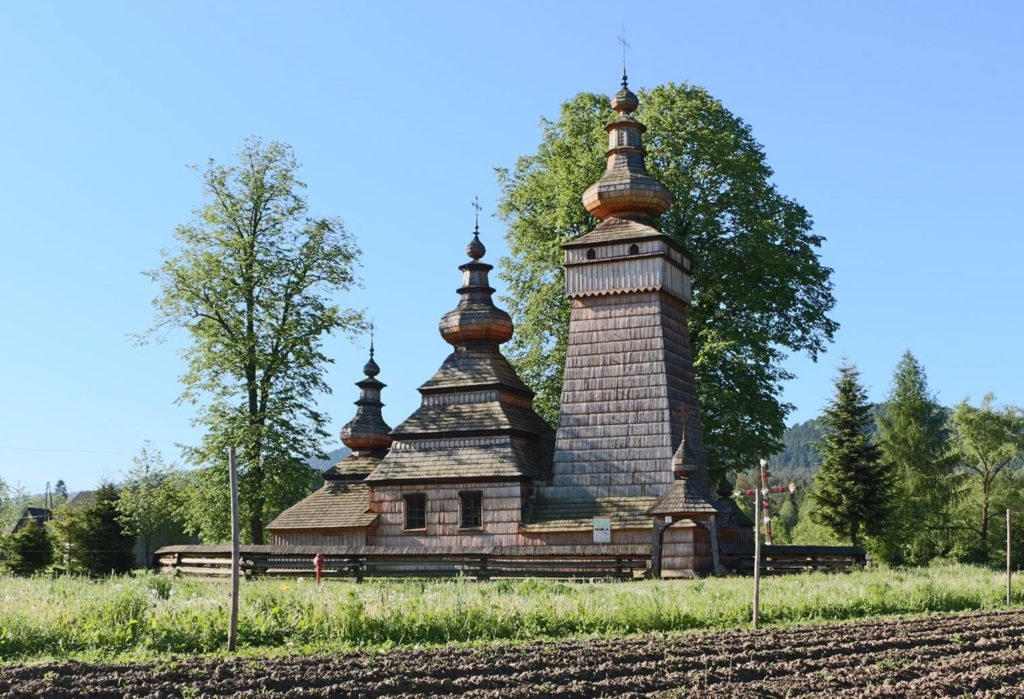
Village of Bielanka (Bilyanka)
Church of the Protection of Our Most Holy Lady | 1713
The church underwent renovations in 1873, and then was damaged by fire in 1946. Today both Roman and Greek Catholic services are held in the church.
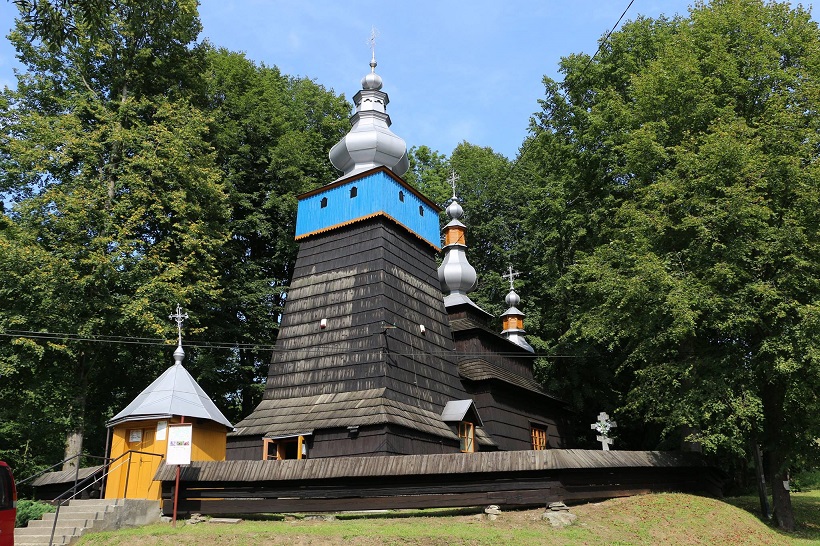
Village of Tylicz (Tylych)
Greek Catholic Church of Sts. Cosmas and Damian | 1743

Village of Czarna (Charna)
Church of St. Demetrius | 1764
Today it is a Roman Catholic church.
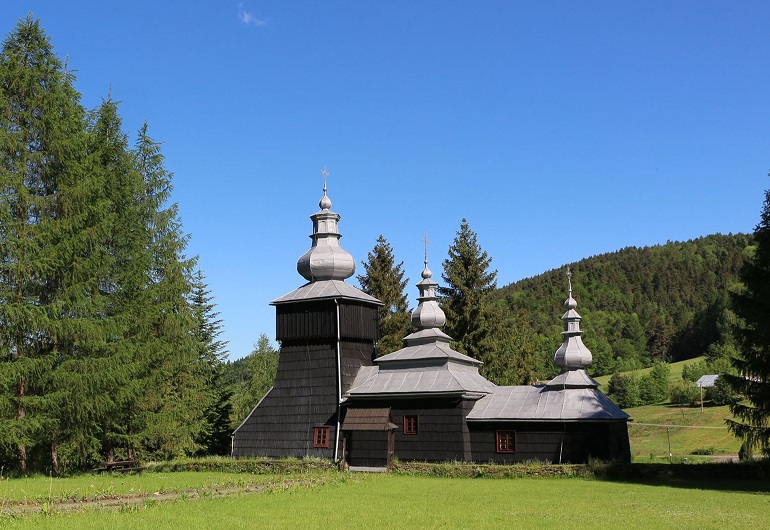
Village of Krempna (Krampna)
Former Greek Catholic Church of Sts. Cosmas and Damian | 1778–1782
The church was founded in place of a previous one, using materials from the original structure. It was thoroughly renovated in 1830 and 1893. After the displacement of the Lemkos in 1947, the church was taken over by the State Treasury. In 1956–1962 it was used jointly by Greek Catholics and Roman Catholics, and closed in 1962–71. After renovation in 1972, it served as the Roman Catholic parish church. After a new church was built in 2004, it lost its function of a parish church.

Village of Hyrowa (Hyrova)
Church of the Protection of Our Most Holy Lady | 1780
The alter part of the church is of masonry construction, while the rest was built using the old timber construction technique.
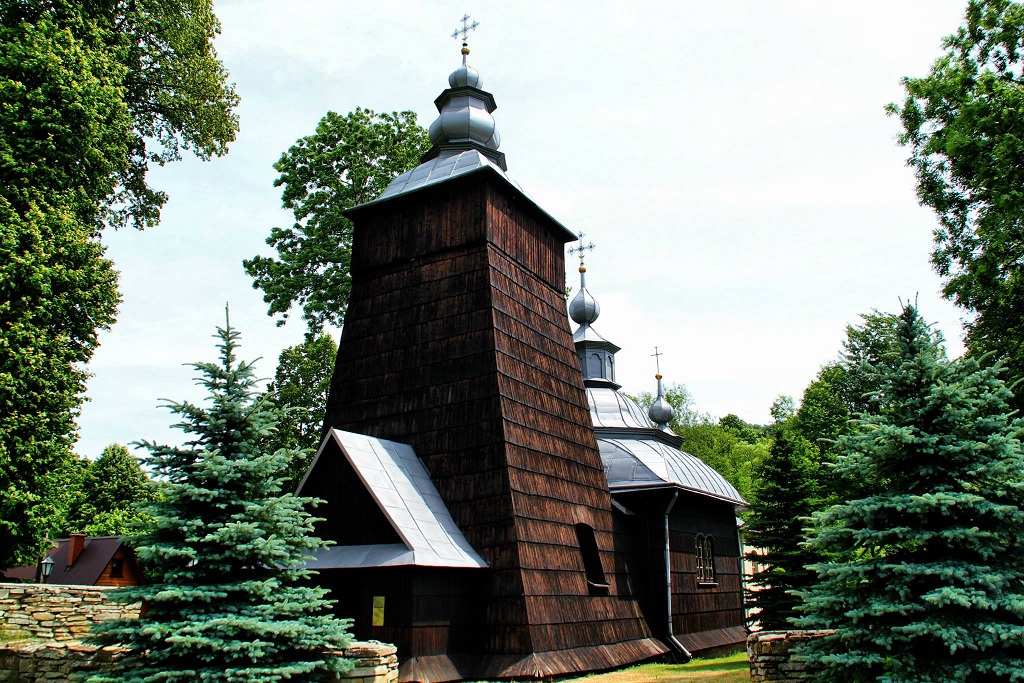
Village of Bartne (Bortne)
Greek Catholic Church of Sts. Cosmas and Damian | 1842
Today the church is a branch of а museum in Gorlice. The church exhibits Lemko art, including an 18th-century iconostasis, a side altar from 1797, and an 18th-century icon of the Blessed Virgin Mary with Jesus the infant.
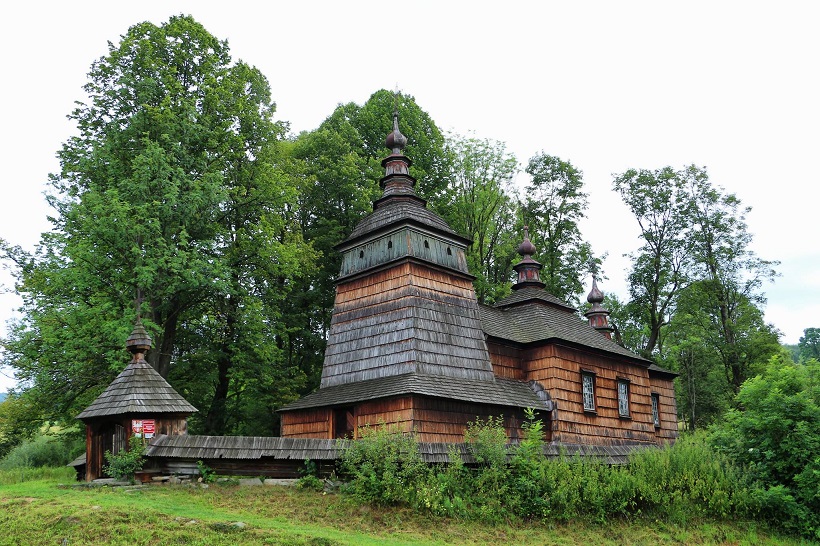
Village of Łabowa (Labova)
Greek Catholic Church of the Protection of Our Most Holy Lady | 1784
Although not built of timber, which was rare in the Lemko region, the structure nonetheless has the distinctive Lemko feature of a tall western tower at the entrance.
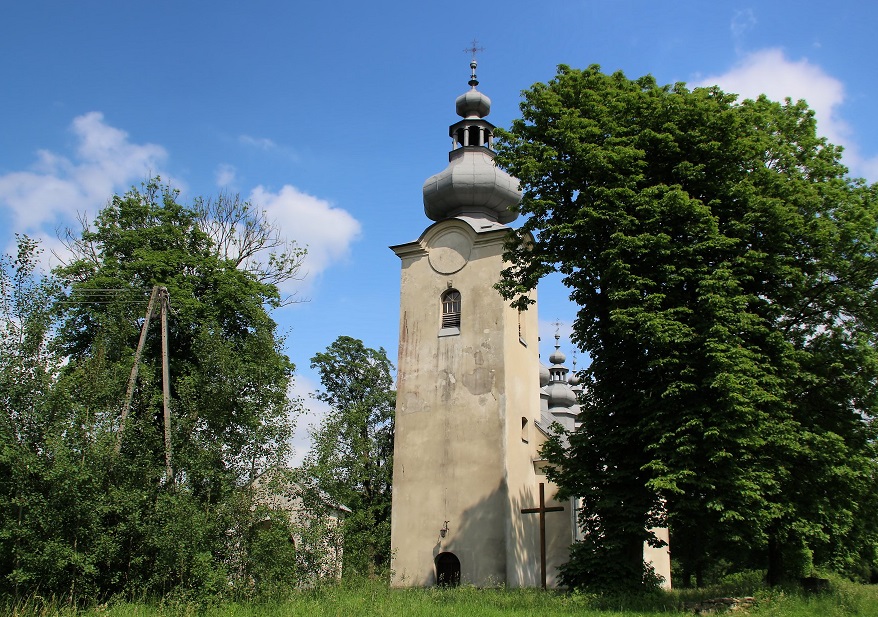
Village of Uście Gorlickie (Ustia Ruske)
Greek Catholic Church of St. Paraskeva | 1786
After 1947 used as a Roman Catholic church, from 1956 Greek Catholic services were also held. In 1997 returned to the Greek Catholic community.

Village of Wojkowa (Voykova)
Former Greek Catholic Church of Sts. Cosmas and Damian | 1792
The Ukrainian Catholic parish was set up in 1595 when the Roman Catholic bishop of Krakow donated a plot of land toward the support of the parish priest. The original church burned down in 1790. The present one was erected two years later. In 1984 the church became property of the Roman Catholic church.
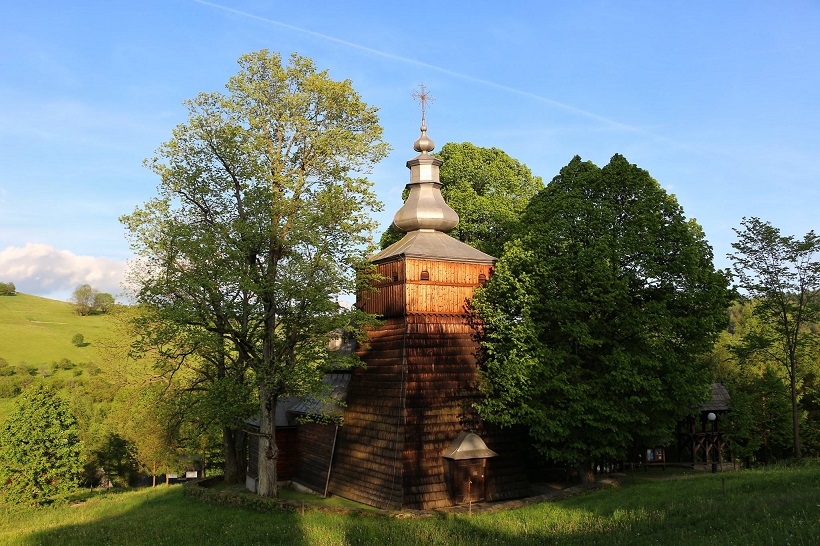
Village of Piorunka (Perunka)
Former Greek Catholic Church of Sts. Cosmas and Damian | 1798
Legend has it that the church stands on the same site where a statue of the pagan god Perun once stood. Today it is a Roman Catholic church.
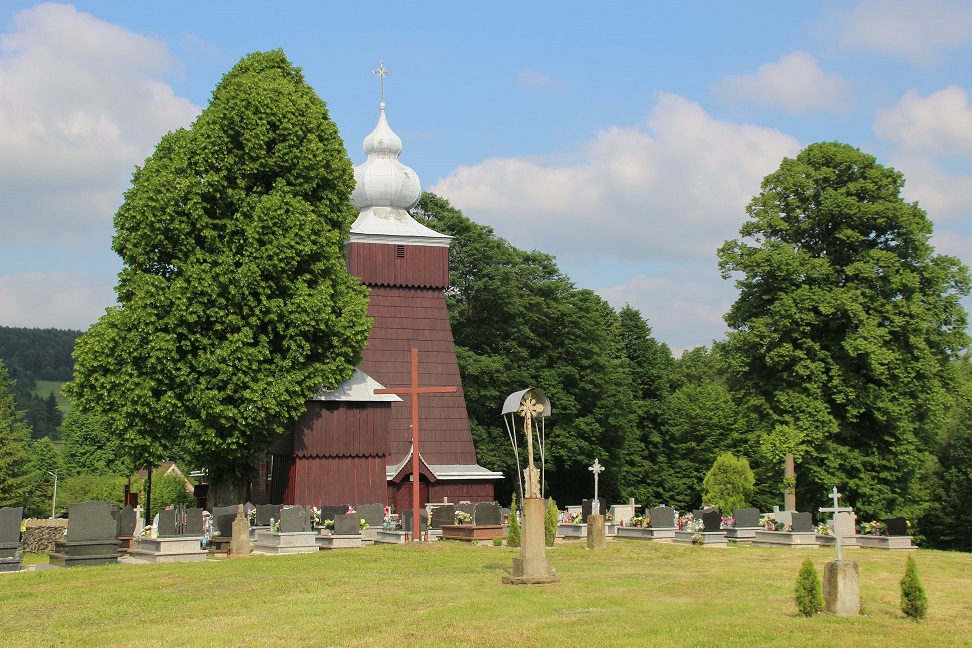
Village of Banica (Banytsia)
Former Greek Catholic Church of Sts. Cosmas and Damian | 1798
Today a Roman Catholic church.

Village of Brunary
Former Greek Catholic Church of Archangel Michael | 18th c.
In 1831, the church was reconstructed and expanded. After the Lemkos were deported during Operation Wisla, the church became Roman Catholic. Inscribed in 2013 on the UNESCO World Heritage List.
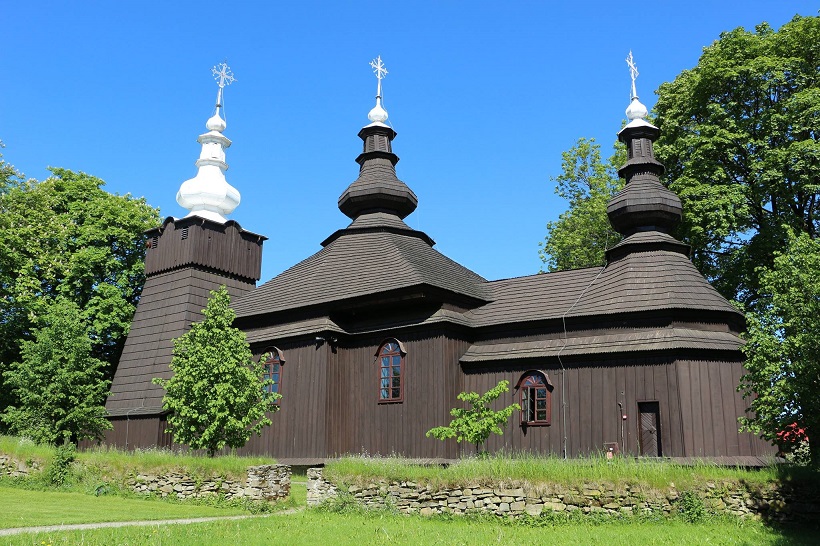
Village of Wołowiec (Volovets)
Former Greek Catholic Church of the Protection of Our Most Holy Lady | 18th c.
In 1927, the Volovets community jointed the Orthodox Church. After the Lemkos were deported in 1947, it was used as a pen for livestock, in 1964 it was transferred to the Polish Orthodox Church.
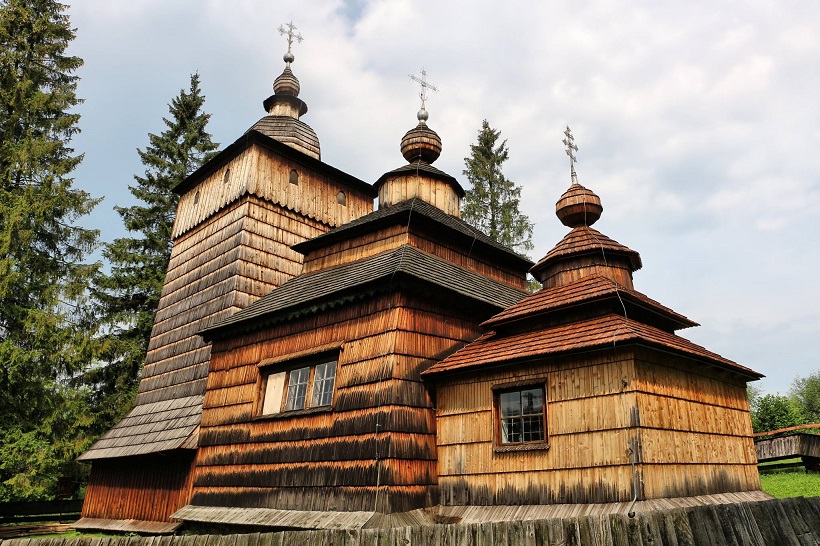
Village of Muszynka (Mushynka)
Former Greek Catholic Church of St. John the Evangelist | 18th c.
Today the church is used by the Polish Roman Catholic parish.
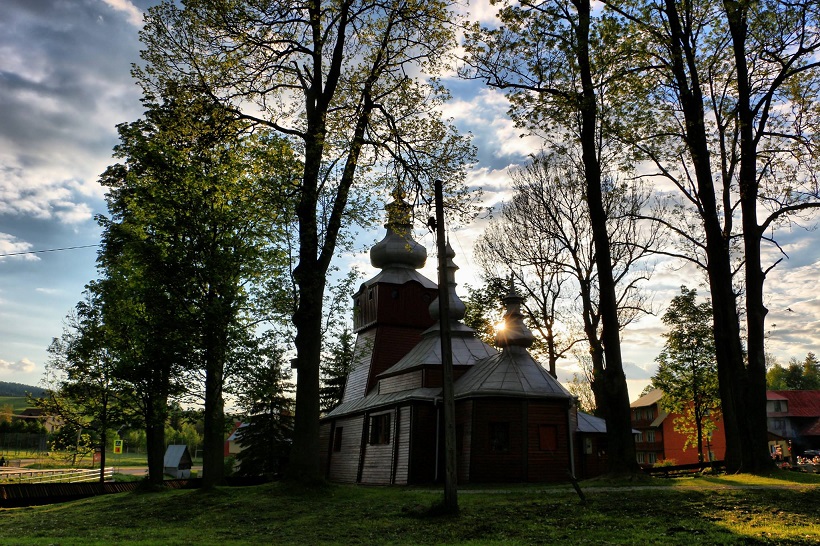
Village of Turzańsk (Turchanske)
Former Greek Catholic Church of Archangel Michael | 1801-1803
After the Lemkos were deported in 1947, the church was transferred to the Roman Catholic parish. In 1961, it was closed, and in 1963 it was transferred to the Orthodox community. Inscribed in 2013 on the UNESCO World Heritage List
The church has distinctive architecture consisting of five domes placed over a five-room, old log style structure. The church is in the form of a cross, the side arms near the altar portion.

Village of Milik (Mylyk)
Former Greek Catholic Church of Sts. Cosmas and Damian | 1813
In the 1980s the church became property of the Polish Roman Catholics.
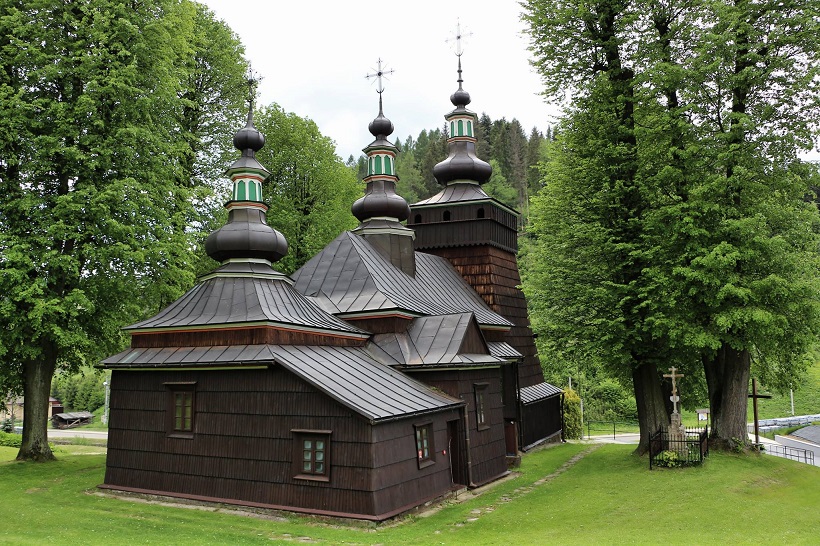
Village of Nowica (Novytsya)
Greek Catholic Church of St. Paraskeva | 1843
Poet Bohdan Ihor Antonych (1909-1937) was born in this village.
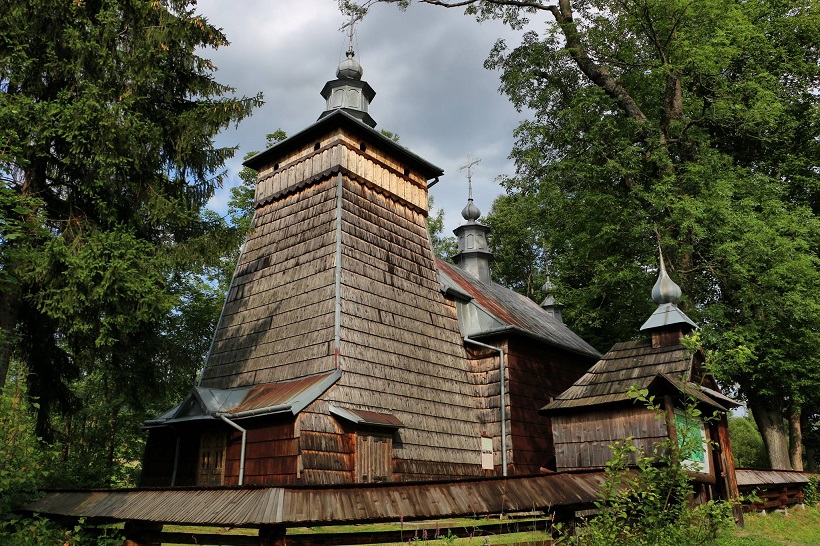
Village of Leszczyny (Lishchyny)
Church of St. Luke the Evangelist | 1835
The church and its possessions were confiscated by the Polish government in 1946 when the Ukrainian population was deported. The church was closed for over three decades. Now it is used by the Orthodox community.
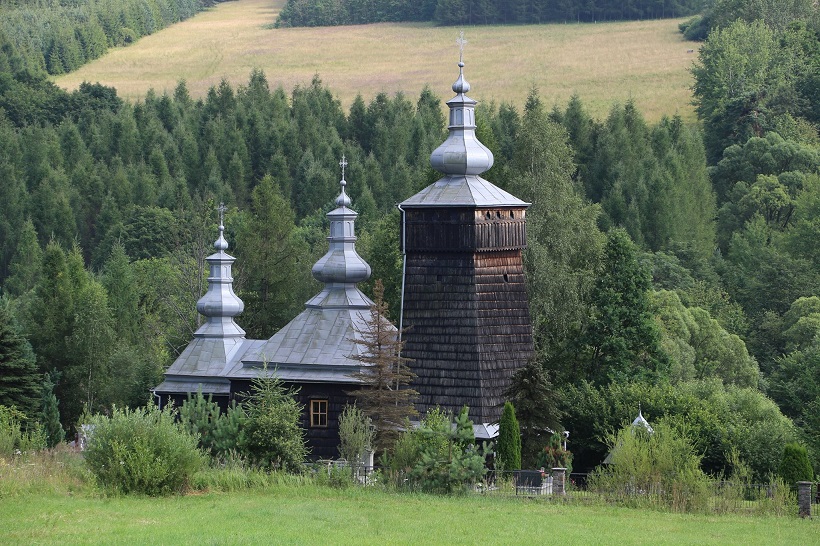
Village of Jastrzębik (Yastryabyk)
Former Greek Catholic Church of St. Luke the Evangelist | 1856
The church is of Lemko log construction style but of somewhat atypical proportions. The entrance tower (babynets) is rather low and distant from the rest of the structure, joined to the main body by a straight roof, giving the church a distinctive silhouette. The church was part of the parish in Zlotske. Today it serves as a Polish Roman Catholic church.
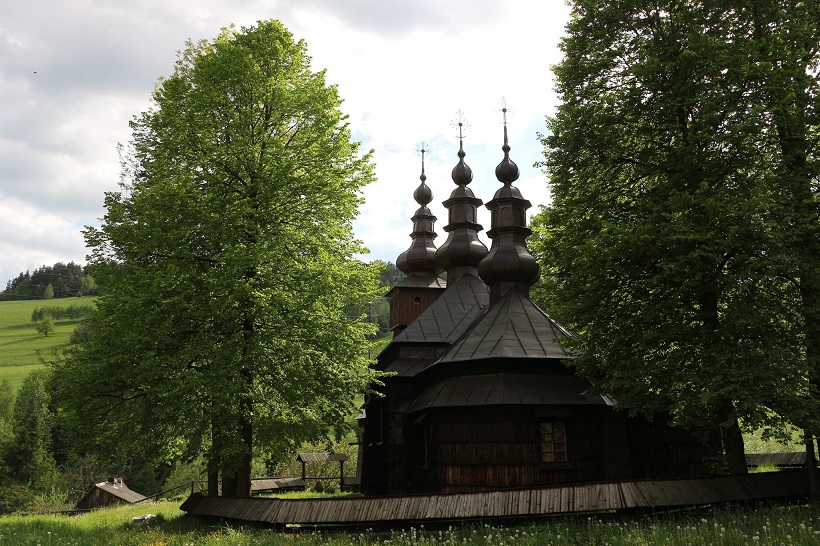
Village of Radoszyce (Radoshytsi)
Former Greek Catholic Church of St. Demetrius | 1868
Today a Roman Catholic church.
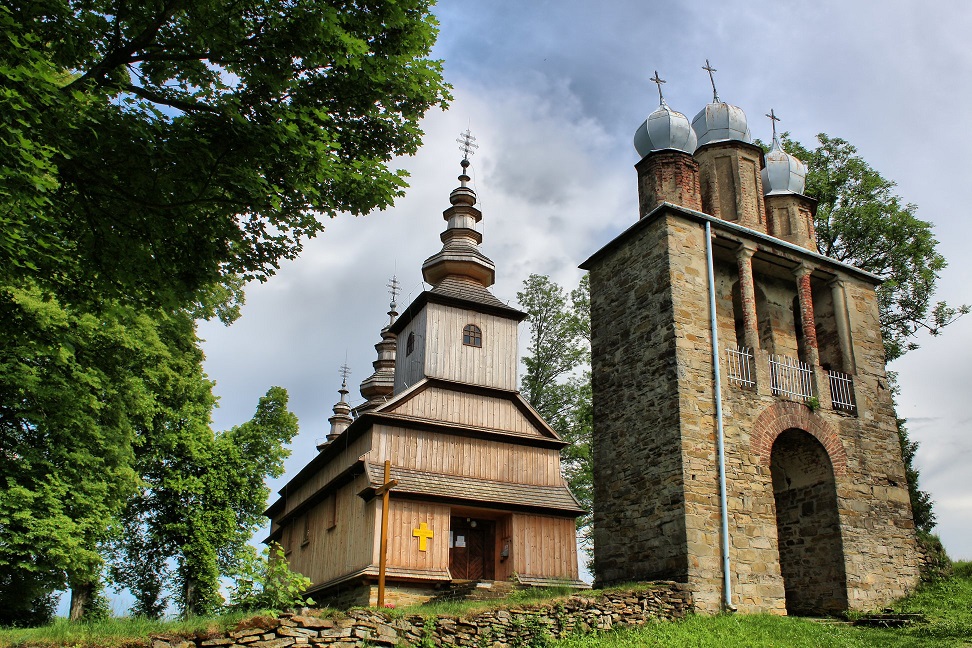
Village of Hańczowa (Hanchova)
Former Greek Catholic Church of the Protection of Our Most Holy Lady | 1871
Today used by the Orthodox community.
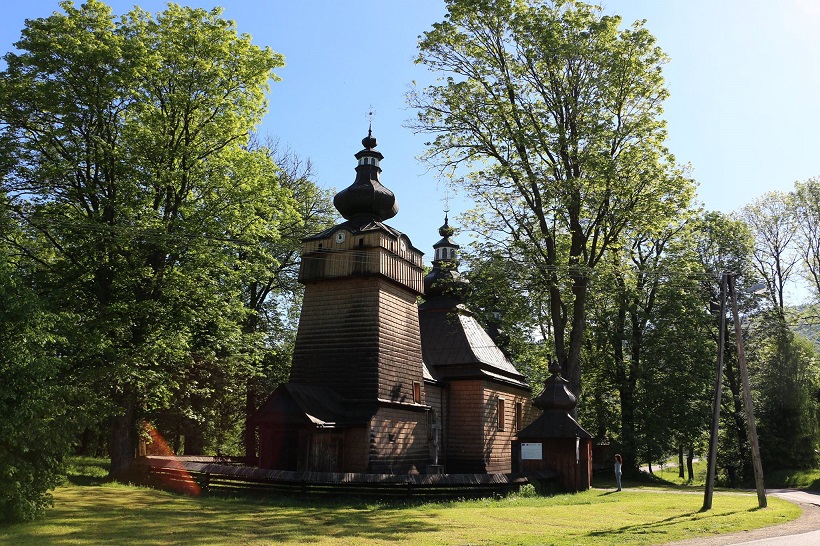
Village of Rzepedź (Reped/Repid)
Greek Catholic Church of St. Nicholas | 1824
The current church stands on the site where the original one was built in 1526. The church is of eastern Lemko style, featuring the three chamber log construction technique. After Lemkos were deported, the church was converted into a Roman Catholic funeral chapel, which saved it from total ruin. In 1970–1973 it was renovated at the initiative of the remaining (or returning) Greek Catholics despite manifestations of repression by the Polish Security Service. In 1976, the Roman Catholic bishop of Przemyśl agreed to open the church on major holidays. In 1987 the church was permanently opened. Today, it is used by both Roman and Greek Catholics.
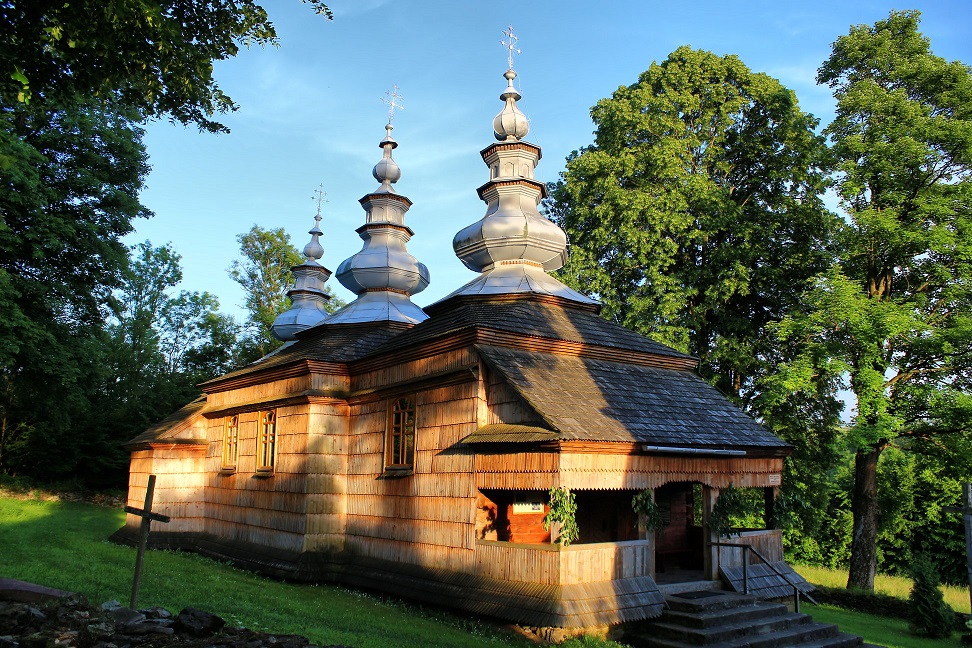
Village of Skwirtne (Skvirtne)
Former Greek Catholic Church of Sts. Kosmas and Damian | 1837
Today a Roman Catholic church.
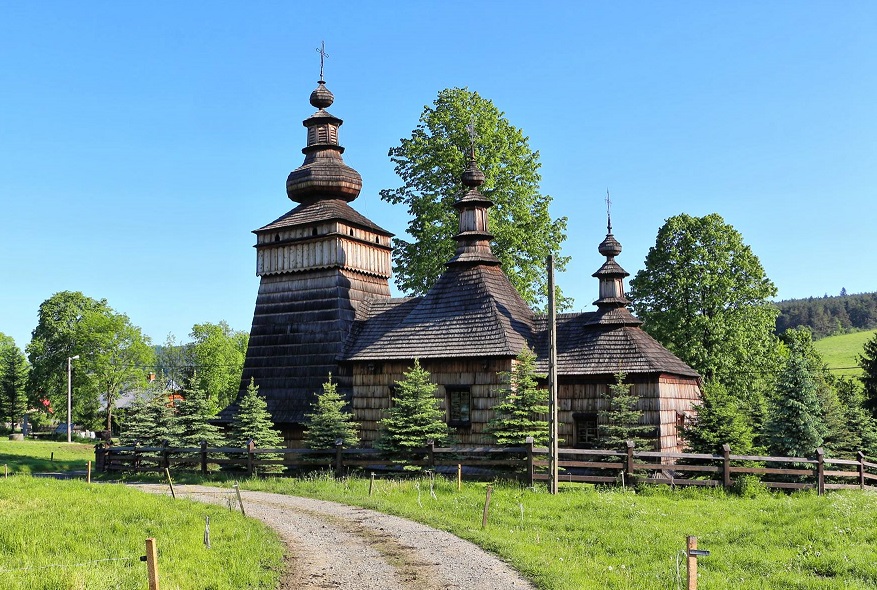
Village of Berest
Former Greek Catholic Church of Sts. Cosmas and Damian | 1842
Today a Roman Catholic Church.
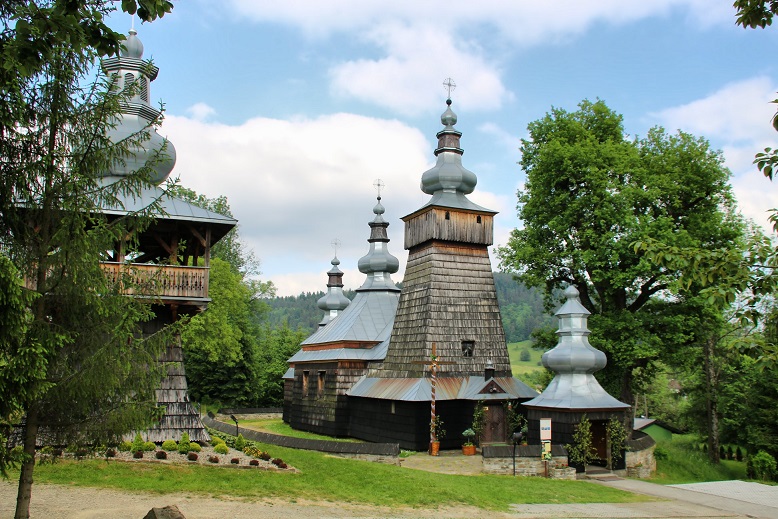
Village of Andrzejówka (Andriyivka)
Former Greek Catholic Church of Dormition of the Mother of God | 1864
Andrzejówka is one of the oldest settlements in the area. An old bell dated from 1484 was still here before the war; its present whereabouts are unknown. Today a Roman Catholic church.
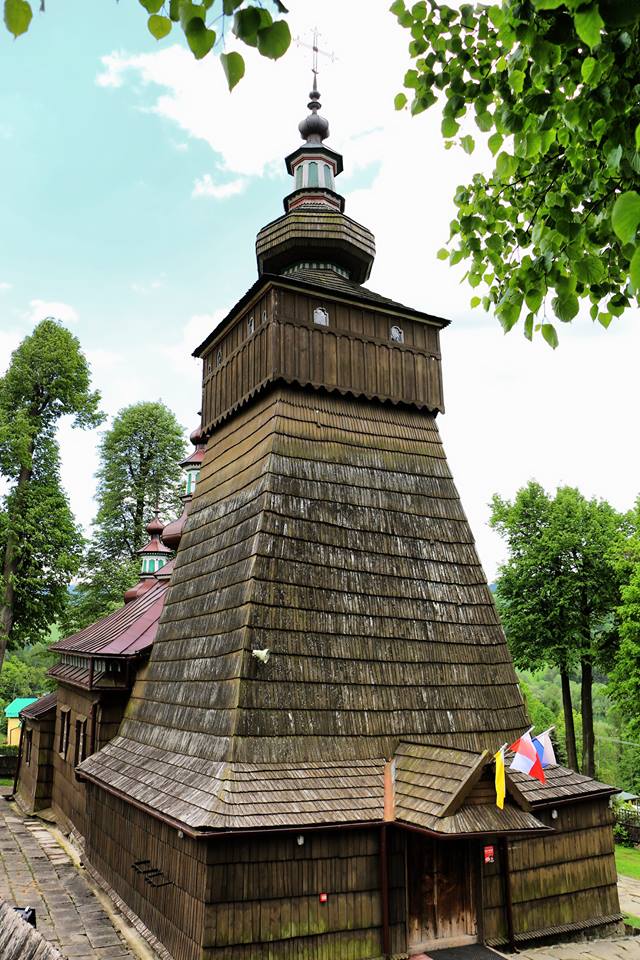
Village of Szczawne (Shchavne)
Former Greek Catholic Church of the Dormition of the Mother of God | 1888-1889
Today an Orthodox church.
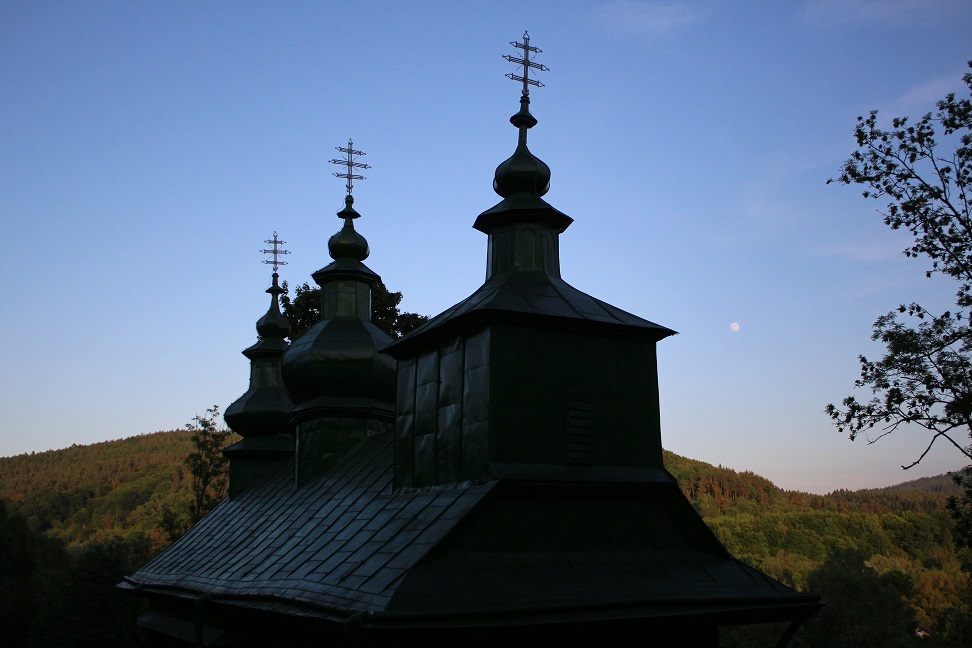
Village of Czyrna (Chyrna)
Former Greek Catholic Church of St. Paraskeva | 1893
A book of the Gospels, a gift from Hryhoriy Prokopovych, was preserved here until WWII. The inscription read that it was donated for “the forgiveness of sins” and there was a penalty prescribed for whoever should remove it from the church. Today, the church is used by Polish Roman Catholics.
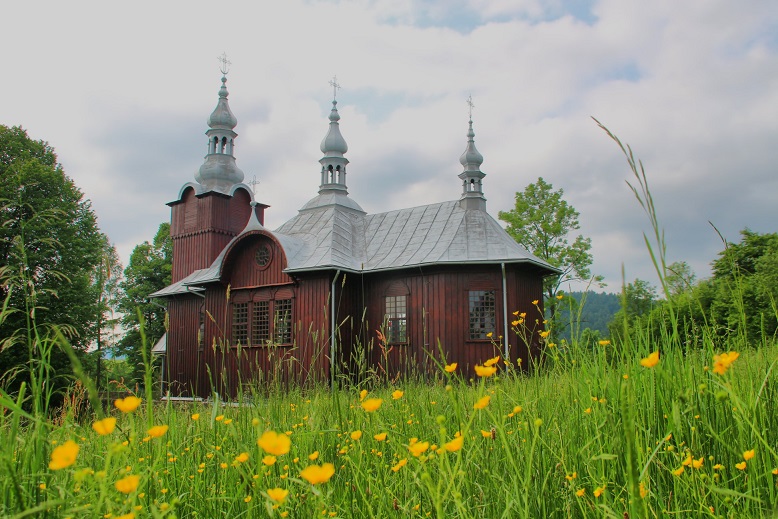
Written by Areta Kovalska
Photographs by Myrko Galizier
Sources:
Wikipedia
“Lemkos,” Internet Encyclopedia of Ukraine
“Lemko region,” Internet Encyclopedia of Ukraine
Oleh Wolodymyr Iwanusiw. Church in Ruins/Церква в руїнi (English/Ukrainian Edition) A Publication of St. Sophia Religious Association of Ukrainian Catholics in Canada, St. Catharines, 1987.
Basil Rotoff, Stella Hryniuk, Roman Yereniuk. Monuments to Faith: Ukrainian Churches in Manitoba. 1990.
See also:

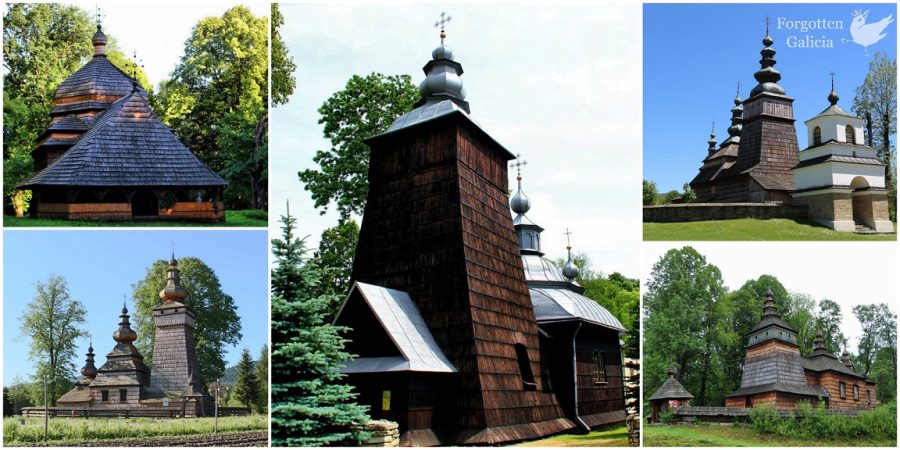




Areta, Thank you for these wonderful photos. It takes time and effort to photograph the cerkiew and RC churches and I appreciate it.
These churches and the people who built them were ALL ORTHODOX Christians Rusyns before the Vatican and the Polish Catholic Kings by stick and carrot CONVERTED the RUSyns into an anomaly called “Greek-Catholic”. Today the offsprings of the once converted Rusyns mostly hate their own roots, hate Orthodox Slavic bothers and sisters or are fully ignorant of their
own ancestors lives, culture,traditions and their Orthodox ☦️ faith. Sad results of the Vatican’s work. Tu very similar example of their divide et imerium strategies.
cudowne
I loved the dedication and attention spent in presenting these wonderful works of art and architecture in your words and photos. I believe they were all divinely inspired and the efforts to preserve them for the memories of the people,culture, and hope. Thank you for this. On this Sunday morning I pray that you may have eternal peace and love and the continued preservation and veneration of the Saints and clergy of all these Orthodox Churches of worship.
Thank you for sharing these exterior images. Have you corresponding interior views for each church?
Fantastic
My Mum’s church at Radoszyce.
Visited it a couple of years ago when at the Lemko Vatra
[…] with a church as the prominent feature in the middle of town. Some were examples of spectacular Greek Catholic and Eastern Orthodox church […]